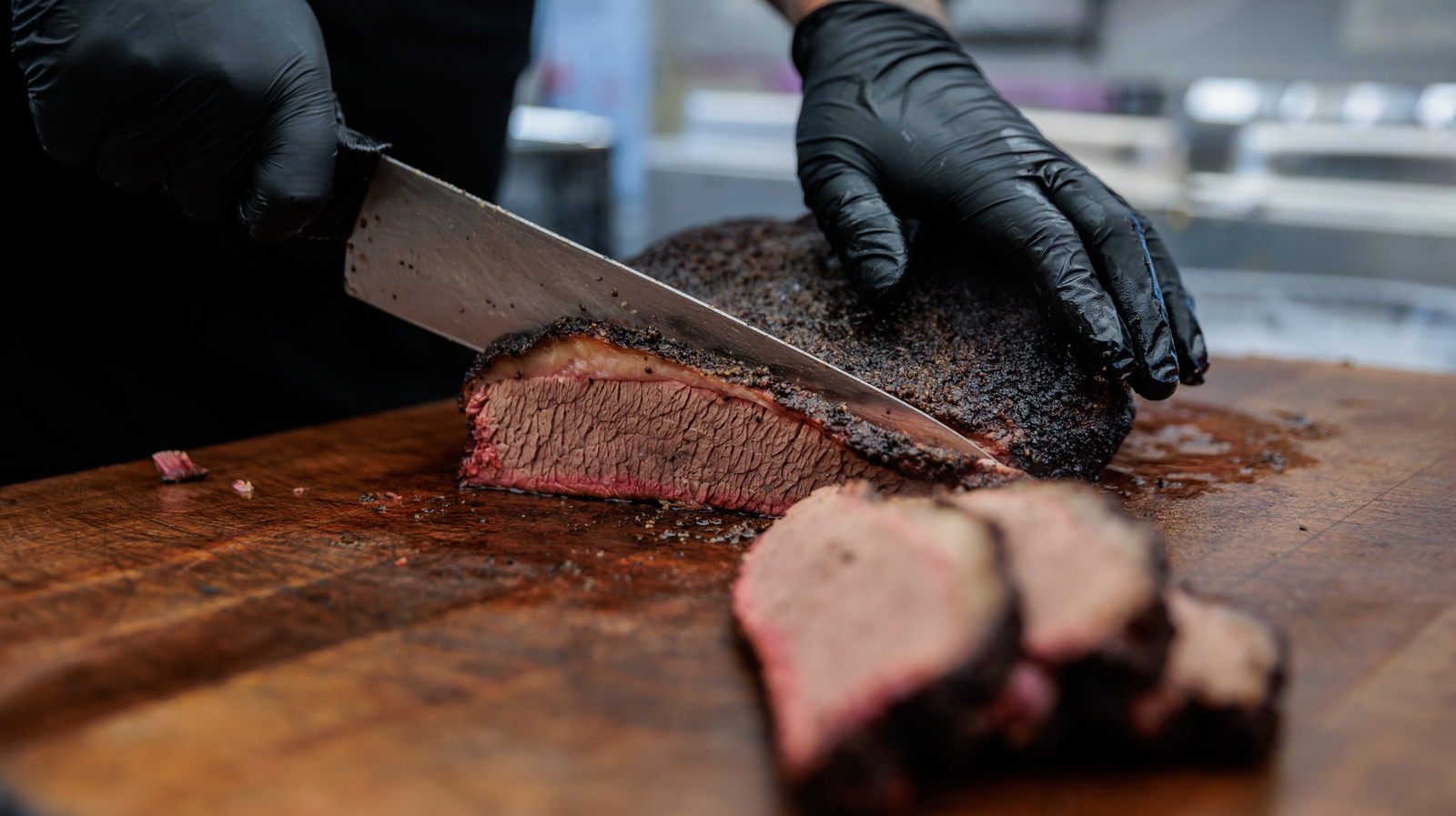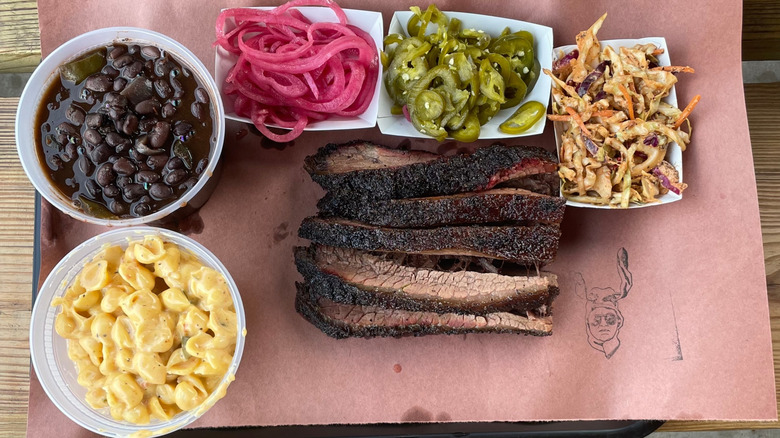In the U.S., barbecue is a highly regional cuisine, with fierce pride surrounding every region’s specialty dish. However, too many regional styles of barbecue on a menu is a red flag because the magic lies in joints dedicated to their niche. And, if you’re in Texas, that means beef brisket. So, you may wonder, how is this mouth-watering meat prepared in the Lone Star State? Well, as the saying goes, everything is bigger in Texas — and this also applies to brisket. Barbecue restaurants favor using a whole cut with fat attached, a style of butchering called the packer cut. This includes the point cut, which is richly marbled and also allows you to get the delicious and highly sought-after burnt ends.
The go-to preparation for Texas brisket is low-and-slow smoking, cooked at a temperature of around 250 degrees Fahrenheit for up to eight hours. This technique melts down the fat, creating fall-apart tender slices. Meanwhile, external seasonings are light-handed; and a simple salt and pepper dry rub (with a few optional additional spices) is all that’s involved. So, to make the meat shine, pit masters select the best wood for smoking brisket, which Texans often believe comes from a local tree like pecan, hickory, oak, or mesquite. Together, this all adds up to a mouthwatering meat dish that’s become deservedly synonymous with Texas barbecue.
Texas brisket is all about patience and dedication
The Texas-style brisket often feels intimidating to home cooks. Due to its long cooking duration, exclusively smoker-based technique, and the unusually large cut of tough meat, it’s hard to make a perfect and juicy brisket in a home kitchen. Plus, it’s all too easy to ruin the brisket’s texture with a few simple mistakes. Furthermore, the flavor of the meat comes by way of patience, rather than many spices or a lathered sauce. Throw in the fact that the end result is enjoyed on its own rather than chopped into a sandwich, and it further cements why the dish is typically entrusted to experienced smokers.
However, the dedication required to successfully make Texas-style brisket is what has helped create the Lone Star State’s distinguished style and fanfare, with enthusiasts sometimes waiting in line for hours to try out brisket at the best restaurants. Also, Texas brisket has regional differences, all of which require special knowledge and skills to make well. The salt-and-pepper dry rub brisket is most typical of Central Texas, where German and Czech immigrants influenced the technique. Head to East Texas and brisket turns into a more Southern-style dish, pulled apart into a sandwich. And in Dallas, the meat cut is commonly braised and then served in taco form. However, despite their differences each regional brisket is delicious and showcases its own version of Texas culture.





